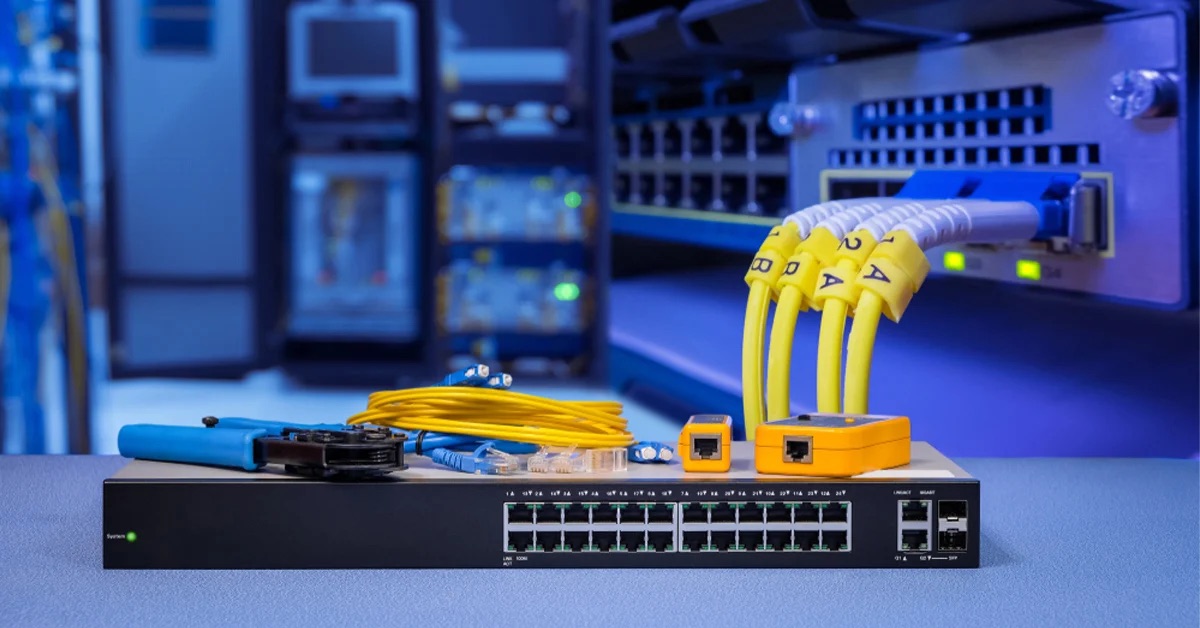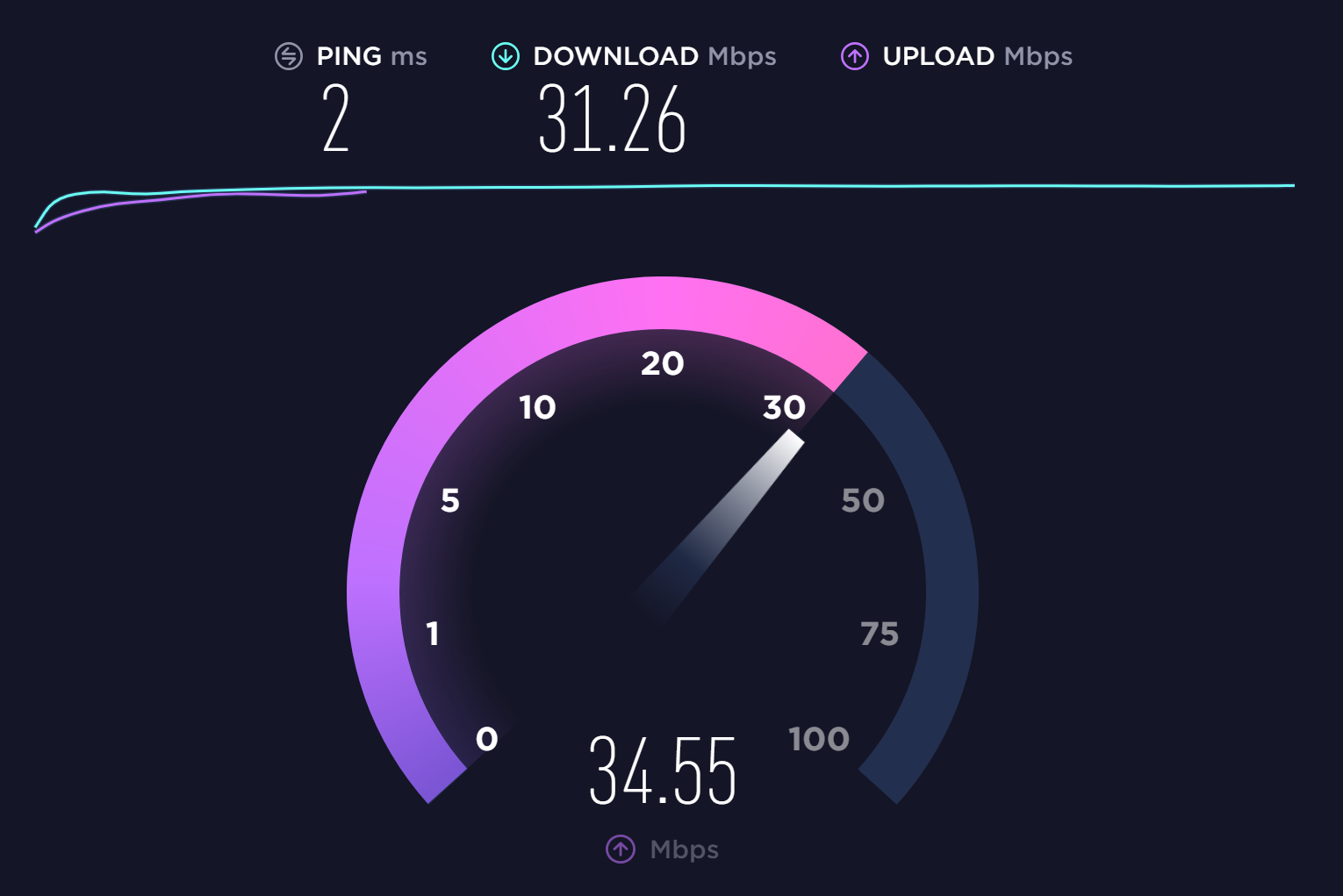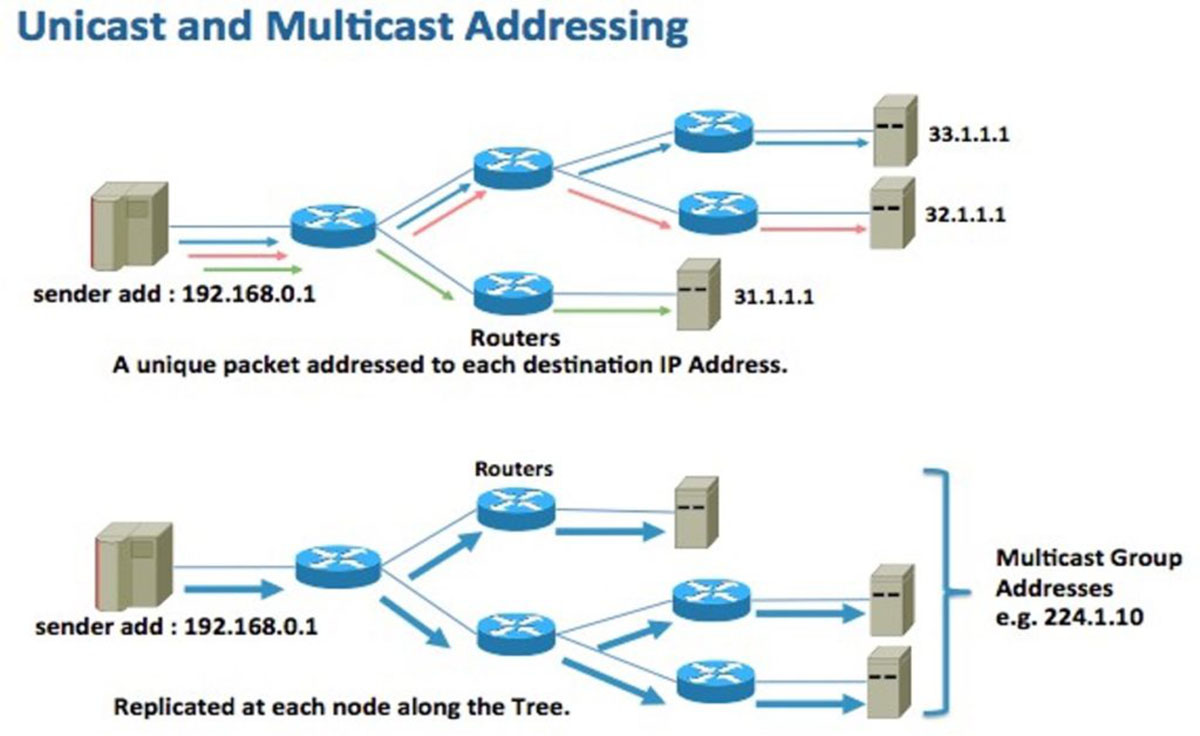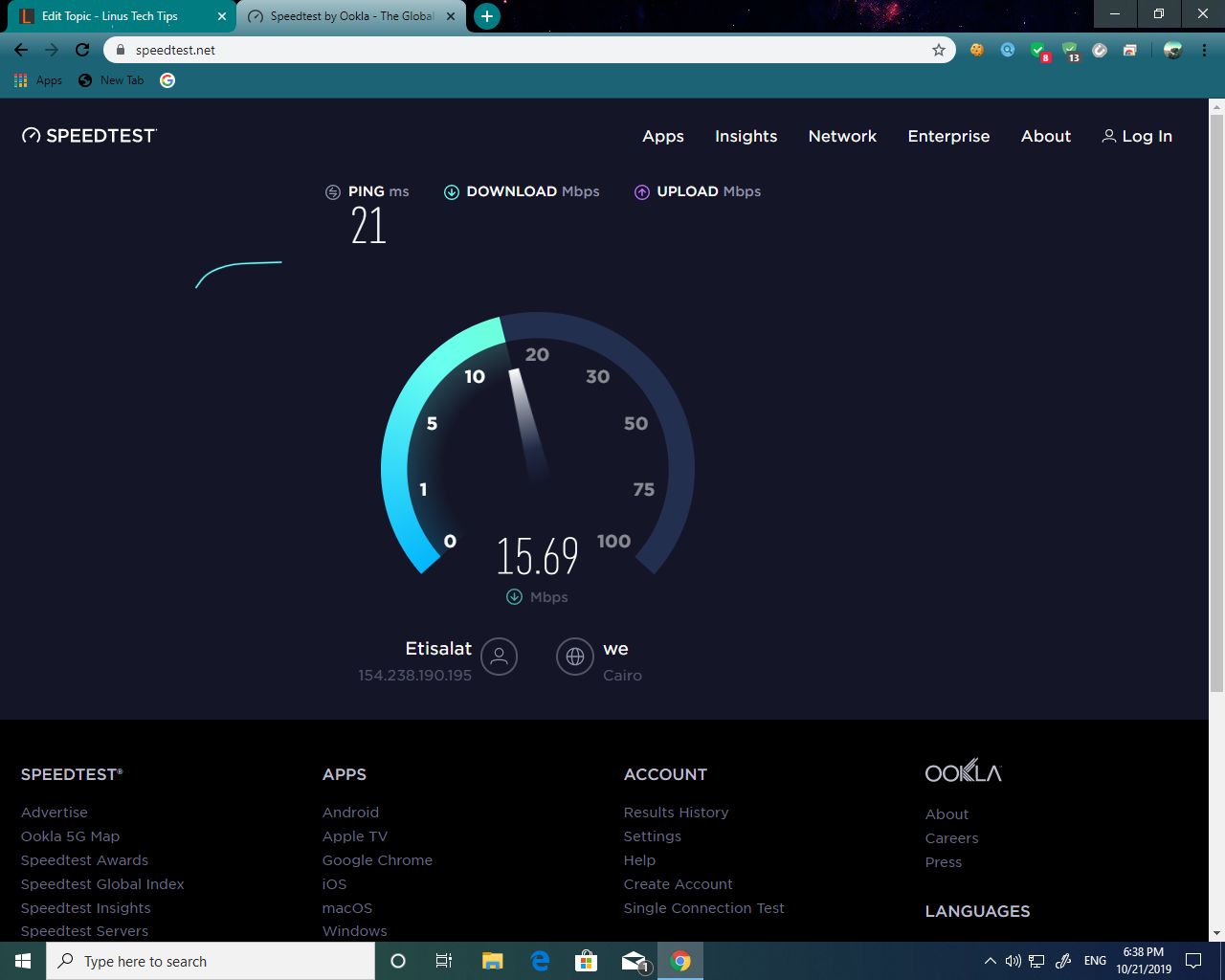Introduction
Welcome to the exciting world of online gaming, where players from around the globe connect and compete in various virtual universes. Whether you’re battling fierce dragons, exploring mysterious lands, or engaging in intense team-based combat, online gaming offers endless entertainment and an opportunity to connect with fellow gamers. However, despite the convenience and excitement of online gaming, there are certain issues that can hinder the overall experience, such as jitter and packet loss.
Jitter and packet loss are two common problems that can plague online gaming sessions and directly impact gameplay. Understanding the causes and effects of these issues is crucial for gamers who want to optimize their performance and enjoy a seamless gaming experience.
In this article, we will delve into the world of jitter and packet loss in online gaming. We will explore their definitions, the factors that contribute to their occurrence, and their effects on gameplay. Additionally, we will discuss some effective strategies for minimizing jitter and packet loss, allowing you to take your gaming experience to new heights.
So, whether you’re a casual gamer who loves a quick match after a long day or a dedicated player striving for victory in competitive tournaments, read on to gain a deeper understanding of jitter and packet loss in online gaming.
What is jitter?
Jitter refers to the variation in the delay of data packets as they travel from one point to another in a network. In the context of online gaming, jitter is the inconsistency or fluctuation in the time it takes for game data packets to be transmitted between the player’s device and the game server. It is typically measured in milliseconds (ms).
When playing online games, a stable and low jitter level is crucial for a smooth and responsive gameplay experience. A high level of jitter can result in noticeable delays, lag, and inconsistency in the movements and actions of game characters. This can greatly affect the player’s ability to react quickly, make precise movements, and maintain a competitive edge over opponents.
Jitter can occur due to various factors in the network infrastructure, such as network congestion, packet reordering, and fluctuations in internet traffic. Network congestion happens when there is a high volume of data traffic, causing delays in packet transmission. Packet reordering can occur when packets arrive at the destination out of order, requiring additional time for the game server to reassemble them in the correct sequence.
Additionally, fluctuations in internet traffic can contribute to jitter. For example, if multiple users on the same network are simultaneously streaming high-definition videos or downloading large files, it can result in network congestion and increased jitter for online gamers sharing the same connection.
Overall, high levels of jitter can lead to frustrating gaming experiences, as player commands may be delayed or executed inconsistently. To combat the negative impacts of jitter, it is important to identify and address the underlying causes, as well as implement strategies to minimize its occurrence.
What causes jitter in online gaming?
Several factors can contribute to the occurrence of jitter in online gaming. Understanding these causes is essential for effectively addressing and minimizing jitter to improve the overall gaming experience.
1. Network congestion: One of the primary causes of jitter is network congestion. When there is a high volume of data traffic on the network, game data packets can get delayed. This congestion can occur at various points in the network, including the player’s local network, internet service provider’s infrastructure, and the game server. To reduce the impact of network congestion, optimizing network bandwidth and prioritizing gaming traffic can be beneficial.
2. Packet loss: Jitter and packet loss often go hand in hand. When packets are lost during transmission, it can lead to jitter as the missing packets are retransmitted or handled out of order. Factors such as network congestion, faulty network equipment, or inadequate network configurations can contribute to packet loss. Minimizing packet loss can help reduce jitter and improve the overall gaming experience.
3. Quality of Service (QoS) issues: QoS refers to the management and prioritization of network traffic. In some cases, the absence or misconfiguration of QoS can lead to high jitter levels. By implementing QoS techniques, such as traffic shaping and packet prioritization, gaming data can be given higher priority over other types of network traffic, resulting in reduced jitter.
4. Distance and latency: The physical distance between the player’s location and the game server can affect jitter. Longer distances generally result in higher latency, which can increase the likelihood of jitter. Routing algorithms and network infrastructure along the path data takes from the player to the game server can also introduce additional latency and jitter.
5. Network hardware and software issues: Faulty or outdated network hardware, such as routers or network interface cards, can contribute to the occurrence of jitter. Similarly, issues with network software configurations, firewalls, or antivirus programs can also cause jitter. Ensuring that network equipment is up-to-date and properly configured can help mitigate jitter.
By understanding the causes of jitter in online gaming, players can take proactive steps to minimize its impact. Implementing strategies to reduce network congestion, optimizing network configurations, and prioritizing gaming traffic can all contribute to a smoother and more enjoyable gaming experience.
How does jitter affect online gaming performance?
Jitter can have a significant impact on the performance of online gaming, affecting the overall gameplay experience in several ways:
1. Increased input delay: When there is significant jitter, the time it takes for player inputs to be transmitted to the game server and for the server’s response to be received by the player is inconsistent. This leads to increased input delay, making it challenging for players to execute actions accurately and responsively. Quick reactions, precise movements, and timely ability usage may become significantly more difficult, putting players at a disadvantage in fast-paced and competitive gaming scenarios.
2. Inconsistent movement and actions: Jitter can cause inconsistencies in the movement and actions of game characters, resulting in a jerky or stuttering animation. This can make it harder for players to anticipate and react to the movements of other players or AI opponents, leading to a less immersive and enjoyable gaming experience.
3. Unreliable hit registration: In games that involve shooting or melee combat, jitter can impact the accuracy and reliability of hit registration. Due to the inconsistency in packet delivery, shots or hits may not be properly registered by the game server, leading to instances where players might seemingly miss their targets despite their actions being on point. This can be frustrating and can skew the outcome of competitive matches.
4. Disruptions in real-time communication: Many online games rely on real-time communication between players, whether it’s voice chat or text chat. Jitter can introduce delays in communication, causing conversations to become disjointed, conversations to be delayed or cut off, or important information to be missed. This can hinder teamwork and coordinated strategies, negatively impacting player collaboration and overall gameplay experience.
5. Inconsistent gameplay experience: Jitter can result in an overall inconsistent gameplay experience. Actions that normally execute smoothly and predictably may suddenly become erratic and unpredictable. This inconsistency can make it challenging for players to adapt to the changing dynamics of the game and can lead to frustration and a diminished sense of control.
Overall, the negative effects of jitter on online gaming performance can be frustrating and detrimental to the overall enjoyment of the game. Minimizing jitter through optimizing network configurations and addressing underlying causes is crucial for providing a smooth and responsive gaming experience for players.
What is packet loss?
Packet loss refers to the situation when data packets transmitted over a network fail to reach their intended destination. In the context of online gaming, packet loss occurs when game data packets either get delayed or completely lost during transmission between the player’s device and the game server.
Data is typically broken down into small packets for efficient transmission over networks. These packets contain vital information such as player inputs, character movements, game events, and audiovisual data that collectively contribute to the gaming experience. When packets are lost, the information they carry fails to reach the game server or the player, resulting in disruptions and inconsistencies in gameplay.
The degree of packet loss is usually measured as a percentage, representing the ratio of lost packets to the total number of packets sent. Even a small percentage of packet loss can have a noticeable impact on online gaming performance.
Packet loss can occur due to various factors, including network congestion, faulty network hardware, issues with network configurations, and problems with the game server. Network congestion is a common cause of packet loss, as high levels of traffic can overload network equipment and result in packets being dropped. Similarly, hardware issues such as faulty routers or network cables can also contribute to packet loss.
In online gaming, packet loss can lead to several negative effects. When packets containing player inputs are lost, the actions performed by the player may not be registered by the game server, resulting in delayed or unresponsive gameplay. Additionally, lost packets can contribute to inconsistencies in the movement of game characters, causing jerky animations and making it harder for players to accurately predict and respond to their surroundings.
Furthermore, packet loss can impact the accuracy of in-game interactions. Shots or hits that should have successfully landed may not be properly registered, leading to frustrating and unfair gameplay experiences. Additionally, packet loss can disrupt real-time communication between players, resulting in delays or interruptions in voice chat or text chat.
Minimizing packet loss is essential for ensuring a smooth and seamless online gaming experience. This can be achieved by implementing effective network management techniques, optimizing network setups, and addressing issues with network hardware and connectivity. By reducing packet loss, players can enjoy a more consistent and responsive gaming experience.
What causes packet loss in online gaming?
Packet loss in online gaming can be attributed to various factors that disrupt the smooth transmission of data packets between the player’s device and the game server. Understanding these causes is crucial for effectively addressing and minimizing packet loss.
1. Network congestion: Network congestion occurs when there is an excessive volume of data traffic on the network. This congestion can lead to the dropping of packets as network equipment becomes overwhelmed and unable to handle the load. Network congestion can happen at various points in the network, including the player’s local network, internet service provider infrastructure, or the game server’s network.
2. Faulty network hardware: Faulty or outdated network hardware, such as routers, switches, or network interface cards (NICs), can contribute to packet loss. Issues with these components can result in the failure or misalignment of packets, leading to loss during transmission.
3. Network configuration issues: Improper network configurations can also cause packet loss. Misconfigurations in routers, firewalls, or network devices can disrupt the flow of packets, resulting in loss or delays. Incorrect settings for Quality of Service (QoS) or packet prioritization can also contribute to packet loss in certain scenarios.
4. Congestion in the player’s local network: Alongside network congestion on a larger scale, congestion within the player’s local network can also result in packet loss. This can occur when multiple devices within the network are simultaneously using a significant portion of the available bandwidth, causing delays and dropping of packets.
5. Issues with the game server: The game server itself can contribute to packet loss if it is underpowered or overwhelmed by a large number of players. Inadequate server infrastructure, software bottlenecks, or limitations in processing capabilities can result in packet loss and affect the overall gaming experience.
6. Interference and signal degradation: In wireless networks, physical obstacles, distance from the router, or other sources of interference can cause packet loss. Weak signals or signal degradation can lead to packet loss or corrupted packets, impacting the reliability of the connection.
7. Internet Service Provider (ISP) issues: Occasionally, the ISP may experience technical difficulties or disruptions in their network infrastructure, resulting in packet loss for all of their customers, including online gamers. Such issues are usually temporary, but they can significantly impact gameplay during their occurrence.
Minimizing packet loss requires both proactive measures and troubleshooting techniques. Implementing network optimizations, maintaining up-to-date hardware and software configurations, and working with a reliable and responsive ISP are key steps in addressing packet loss issues and improving the online gaming experience.
How does packet loss affect online gaming performance?
Packet loss in online gaming can have a significant impact on the overall gaming performance, leading to various challenges and disruptions during gameplay:
1. Incomplete or delayed actions: When packets are lost during transmission, the actions performed by the player may not be properly registered by the game server. This can result in delayed or incomplete actions, making it difficult for players to execute precise movements or react quickly to in-game events. It can lead to instances where characters may appear to freeze or move erratically, causing frustration and hindering gameplay performance.
2. Disrupted visual and audio experience: The loss of packets containing audiovisual data can result in disruptions to the in-game experience. Characters may appear to jump or teleport due to missing animation frames, and audio cues may become distorted or completely missing. These inconsistencies in visuals and audio can make it challenging for players to fully immerse themselves in the game world, impacting their ability to make informed decisions and respond effectively.
3. Unreliable hit detection: In online games that involve combat or shooting mechanics, packet loss can affect the accuracy and reliability of hit detection. Shots or attacks that should have successfully landed on a target may not be properly registered due to lost packets. This can result in situations where players miss their targets or experience instances where they seemingly take damage without any apparent cause. Such unreliable hit detection can significantly impact the fairness of gameplay and frustrate players.
4. Disrupted multiplayer interactions: In multiplayer games, packet loss can affect real-time interactions between players. Voice chat or text chat messages may get delayed, interrupted, or even lost entirely. This can hinder effective communication and coordination among team members, impacting collaborative gameplay strategies and reducing the overall performance of the team.
5. Gameplay inconsistency: Packet loss can introduce inconsistency into the gameplay experience. The movements of characters may appear jittery or stutter due to missing animation frames, leading to difficulties in predicting and reacting to the actions of other players or AI opponents. This inconsistency can impact players’ ability to strategize, make informed decisions, and perform at their best, ultimately decreasing overall gaming performance.
6. Reduced competitiveness: Packet loss can create an unfair advantage or disadvantage for players. In competitive gaming scenarios, even a minor loss of packets can result in performance disparities between players. Those experiencing higher packet loss may struggle to react to opponents quickly, leading to a less competitive experience and potentially affecting their ranking or competitiveness in the game.
Reducing packet loss is essential to maintain a smooth and seamless online gaming experience. By addressing the underlying causes such as network congestion, hardware issues, and network configurations, players can minimize the negative effects of packet loss and enjoy a more consistent and responsive gameplay environment.
How to reduce jitter and packet loss in online gaming?
Experiencing high levels of jitter and packet loss can be frustrating for online gamers. Fortunately, there are several steps you can take to minimize these issues and improve your overall gaming experience:
1. Use a wired connection: Using a wired Ethernet connection instead of Wi-Fi can help reduce packet loss and jitter. Wired connections provide more stable and reliable data transmission, minimizing the chances of interference and signal degradation that can lead to packet loss.
2. Optimize your network settings: Configure your network settings for optimal gaming performance. Set up quality of service (QoS) settings on your router to prioritize gaming traffic and ensure a smooth gaming experience. Additionally, adjust your network buffer sizes to minimize latency and improve the overall stability of your network connection.
3. Check your hardware: Ensure that your network equipment, such as routers and network cables, are in good condition and up to date. Faulty or outdated hardware can contribute to packet loss and jitter. Consider upgrading to newer models or replacing damaged cables to improve your network performance.
4. Choose a reliable internet service provider (ISP): The quality and reliability of your internet service can greatly impact your gaming experience. Research and choose an ISP that offers stable and fast connections with minimal packet loss. Consider switching to a different ISP if you consistently experience issues with high jitter and packet loss.
5. Avoid network congestion: Minimize network congestion by limiting the number of devices using your network or scheduling resource-intensive activities (such as streaming or large downloads) for periods when you’re not gaming. This will help to allocate more bandwidth for your gaming traffic and reduce the chances of packet loss due to network congestion.
6. Use network monitoring software: Install network monitoring software to keep track of your network performance and identify potential issues. These tools can detect packet loss and provide insights into the causes, allowing you to troubleshoot and make necessary adjustments to improve your gaming connection.
7. Choose game servers closer to your location: When selecting game servers, try to choose ones that are geographically closer to your location. This can help reduce latency and packet loss caused by long-distance data transmission. Connecting to servers with lower latency can result in a more responsive and stable gaming experience.
8. Consider a gaming VPN: A gaming VPN (Virtual Private Network) can help reduce packet loss and improve gaming performance by providing a more direct and stable connection to game servers. However, it’s important to choose a reputable VPN service that doesn’t introduce additional latency or congestion.
By implementing these strategies, you can minimize jitter and packet loss in online gaming, ensuring a smoother and more enjoyable gaming experience. Experiment with different techniques to find what works best for your specific setup and network conditions.
Conclusion
Online gaming is a popular and immersive form of entertainment, but it can be frustrating when faced with issues such as jitter and packet loss. Understanding the causes and effects of these problems is crucial for optimizing gaming performance and improving the overall experience.
Jitter, caused by variations in packet delay, can lead to delayed actions, inconsistent movements, and unreliable hit registration. On the other hand, packet loss, when data packets fail to reach their destination, can result in incomplete actions, disrupted visuals and audio, and unreliable multiplayer interactions.
To reduce jitter and packet loss in online gaming, there are several steps you can take. Using a wired connection instead of Wi-Fi, optimizing network settings, and checking your hardware can help minimize these issues. Choosing a reliable ISP and avoiding network congestion can also contribute to a smoother gaming experience. Monitoring your network and choosing game servers closer to your location are additional strategies to consider. For some, using a gaming VPN can be beneficial, but it’s essential to select a reputable provider.
By implementing these measures, you can mitigate jitter and packet loss, leading to a more responsive and immersive gaming experience. Remember that every gaming setup is unique, and it may require some experimentation to find the combination of strategies that works best for you.
With the right approach, you can minimize jitter and packet loss, ensuring that your online gaming sessions are smooth, engaging, and filled with exciting gameplay moments. So, put these strategies into action and get ready to level up your gaming experience!

























